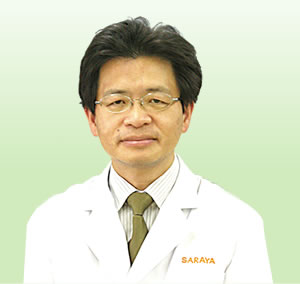- Home
- News
- Consumer Reading Room
- Lakanto’s Story 3: How to Cultivate Monk Fruit
Lakanto’s Story 3: How to Cultivate Monk Fruit

 |
| Dr. Yuji Murata, Ph.D Applied Life Science. Director of SARAYA Natural Materials Laboratory |
The ideal environment for growing good quality monk fruit is the subtropical mountainous region. This means the following conditions:
- Heavy rainfall
- High relative humidity (high foggy climate) and sunshine hours
- High temperature difference between day and night
- Humic soil
The monk fruit plant is a dioecious plant (it has a distinct male and female) and has pale yellow flowers, which bloom from June to August. As pollination by insects is difficult at these altitudes, artificial pollination is performed. As one can imagine, the process of manually applying pollen to the nearly infinite number of monk fruit flowers that bloom on a vast area of land dozens of times the size of a football field, one by one, takes a tremendous amount of work and patience. It then bears fruit from August to October with tubers in the ground, and the vines can grow up to 5 meters long. It is cultivated on well-drained mountain slopes, just like a vineyard.

Because the amount of monk fruit cultivation has been increasing in recent times, research on cultivation methods using cell culture rather than planting seedlings has been conducted for some time, being implemented in our farms several years ago. As a result, it can now be grown on flat fields instead of on steep mountain slopes as in the past, which improved production efficiency.
The fruit is harvested one by one by hand in October and November. I was amazed and grateful to see the farmers carrying more than 60 kilograms of the harvested monk fruits down the steep mountain roads. However, once we were able to grow in a flat field, we were able to increase work efficiency by getting trucks near the field.

It takes hundreds of days from planting the seedlings to artificially pollinate and harvest the fruit. Compared to "synthetic sweeteners" that have been used in so many food products in recent years, plant-derived products such as monk fruit are not guaranteed to produce a stable harvest every year. Cultivation of monk fruit, in particular, is labor-intensive and costly, but I believe it's something that cannot be replaced due to its safety and security.
If it was ordinary fruits and vegetables, they would be put on the market after the harvest and earn a profit. In the case of monk fruit, we have to go through a very labor-intensive process of extraction and refining.
I will explain the extraction and refining process in the next article.
See Lakanto's lineup of products here
LAKANTO’S STORY 2: WHAT'S MONK FRUIT?
LAKANTO'S STORY 4: EXTRACTION OF THE MONK FRUIT
Improving the sanitation, the environment, and health of the world.
Social

© Copyright Saraya.Co.Ltd 2023 All rights reserved.